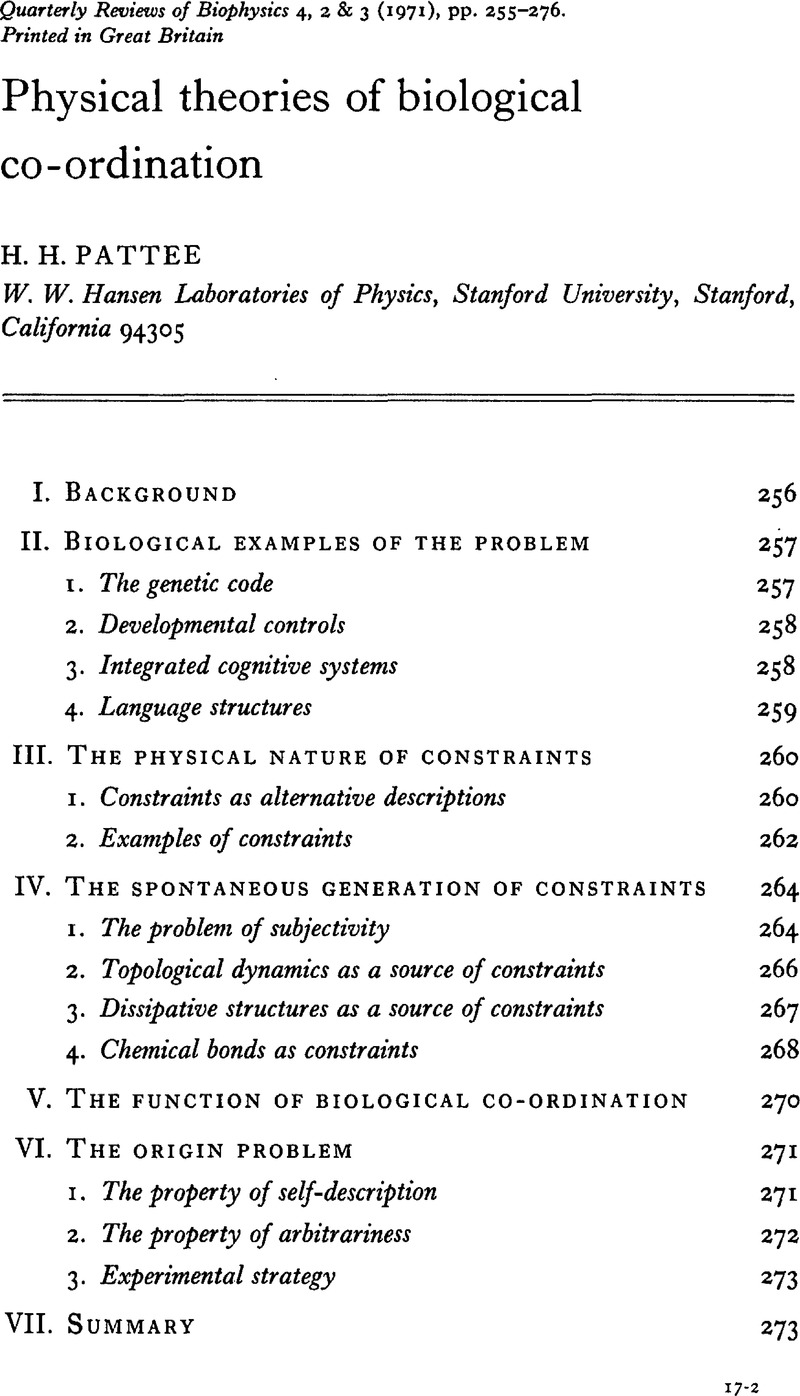Crossref Citations
This article has been cited by the following publications. This list is generated based on data provided by Crossref.
Pribram, Karl H.
1976.
Consciousness and Self-Regulation.
p.
51.
Pribram, Karl H.
1977.
Progress in Ape Research.
p.
57.
Reed, Edward S.
1980.
Information pickup is the activity of perceiving.
Behavioral and Brain Sciences,
Vol. 3,
Issue. 3,
p.
397.
Prindle, Sandra S.
Carello, Claudia
and
Turvey, M. T.
1980.
Animal-environment mutuality and direct perception.
Behavioral and Brain Sciences,
Vol. 3,
Issue. 3,
p.
395.
Jones, Rebecca K.
and
Pick, Anne D.
1980.
On the nature of information in behalf of direct perception.
Behavioral and Brain Sciences,
Vol. 3,
Issue. 3,
p.
388.
Zucker, Steven W.
1980.
The computational/representational paradigm as normal science: further support.
Behavioral and Brain Sciences,
Vol. 3,
Issue. 3,
p.
406.
Welker, Wally
1980.
Percepts, intervening variables, and neural mechanisms.
Behavioral and Brain Sciences,
Vol. 3,
Issue. 3,
p.
405.
Ullman, S.
1980.
Perception, information, and computation.
Behavioral and Brain Sciences,
Vol. 3,
Issue. 3,
p.
408.
Bridgeman, Bruce
1980.
Direct perception and a call for primary perception.
Behavioral and Brain Sciences,
Vol. 3,
Issue. 3,
p.
382.
Johansson, Gunnar
von Hofsten, Claes
and
Jansson, Gunnar
1980.
Direct perception and perceptual processes.
Behavioral and Brain Sciences,
Vol. 3,
Issue. 3,
p.
388.
von Fieandt, K.
1980.
In defense of invariances and higher-order stimuli.
Behavioral and Brain Sciences,
Vol. 3,
Issue. 3,
p.
404.
Grossberg, Stephen
1980.
Direct perception or adaptive resonance?.
Behavioral and Brain Sciences,
Vol. 3,
Issue. 3,
p.
385.
Sloman, Aaron
1980.
What kind of indirect process is visual perception?.
Behavioral and Brain Sciences,
Vol. 3,
Issue. 3,
p.
401.
Mackworth, Alan K.
1980.
Are mediating representations the ghosts in the machine?.
Behavioral and Brain Sciences,
Vol. 3,
Issue. 3,
p.
393.
Hayes-Roth, Frederick
1980.
Mediating the so-called immediate processes of perception.
Behavioral and Brain Sciences,
Vol. 3,
Issue. 3,
p.
386.
Loftus, Geoffrey R.
and
Loftus, Elizabeth F.
1980.
Visual perception: the shifting domain of discourse.
Behavioral and Brain Sciences,
Vol. 3,
Issue. 3,
p.
391.
Zuckerman, Carl B.
1980.
What are the contributions of the direct perception approach?.
Behavioral and Brain Sciences,
Vol. 3,
Issue. 3,
p.
407.
Epstein, William
1980.
Direct perception or mediated perception: a comparison of rival viewpoints.
Behavioral and Brain Sciences,
Vol. 3,
Issue. 3,
p.
384.
Hinton, Geoffrey E.
1980.
Inferring the meaning of direct perception.
Behavioral and Brain Sciences,
Vol. 3,
Issue. 3,
p.
387.
Doner, Jonathan F.
and
Lappin, Joseph S.
1980.
The function and process of perception.
Behavioral and Brain Sciences,
Vol. 3,
Issue. 3,
p.
383.





